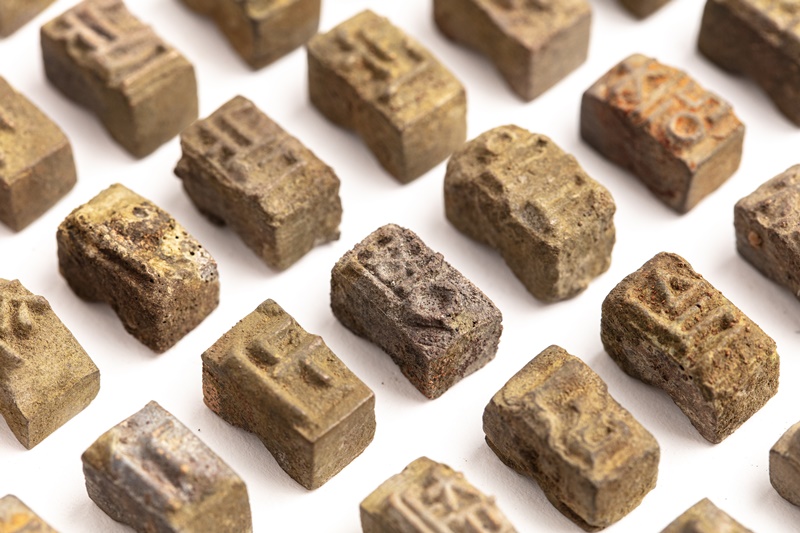
These early metal movable types for Hangeul discovered in Seoul's Insa-dong neighborhood are considered the oldest of their kind. (Cultural Heritage Administration)
By Kim Yeojin and Lee Jihae
Photos = Cultural Heritage Administration
About 1,600 blocks of metal movable type dating back to the 15th and 16th centuries have been discovered in downtown Seoul, with some inscribed with Hangeul around the time when the Korean alphabet was invented.
The Cultural Heritage Administration on June 29 said the Sudo Research Institute of Cultural Heritage unearthed the blocks at an archaeological site in the Insa-dong neighborhood of the city's Jongno-gu District. The artifacts are believed to have been made in the early period of the Joseon Dynasty (1392-1910).
Of the metal moveable types found, the most eye catching are those inscribed with Hangeul.
The Hangeul blocks reflect the letters around the time of the Korean alphabet's creation and are thus considered the oldest of their kind found. The Hangeul blocks are believed to have been made in 1455 and 1465 and those with Chinese script in 1434 and 1455.
The blocks are believed to have been made around the same time Johannes Gutenberg invented the first movable type in the West in the 1440s.
The blocks are the first of their kind discovered to have Hangeul inscribed in the original royal style of the 15th century, when the alphabet was invented.
Also found was the astronomical clock Ilseongjeongsiui, a relic from the early Joseon era used to tell time during the day using the sun and at night using constellations. The Veritable Records of King Sejong said four such clocks were made in 1437 during the king's reign but none had been found before.
Other items discovered include copper parts of the water clock Jujeon, eight artillery weapons and a copper bell.
The unearthing of these scientific relics is the first large-scale discovery of their kind from the Sejong era (1397-1450).
lvzhen@korea.kr